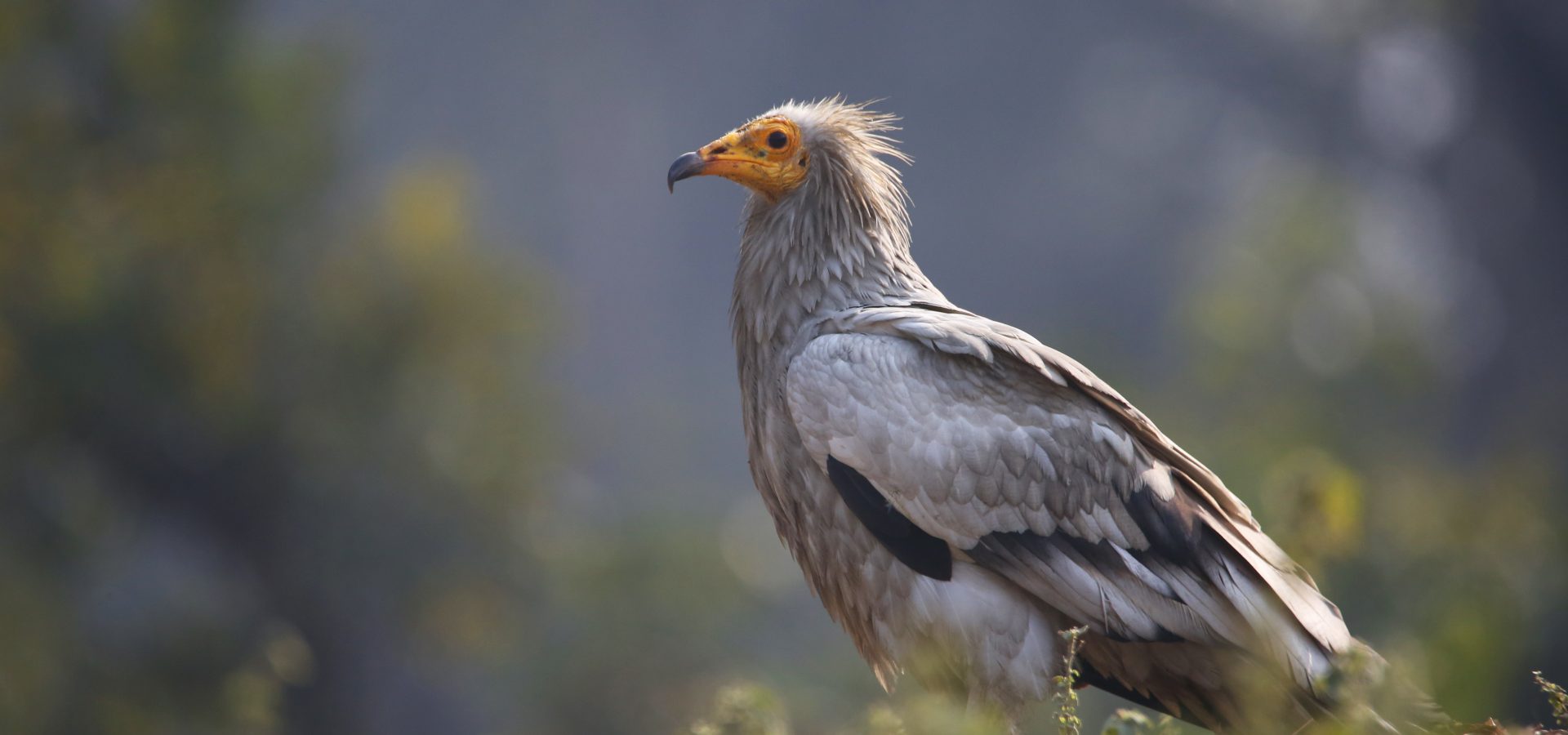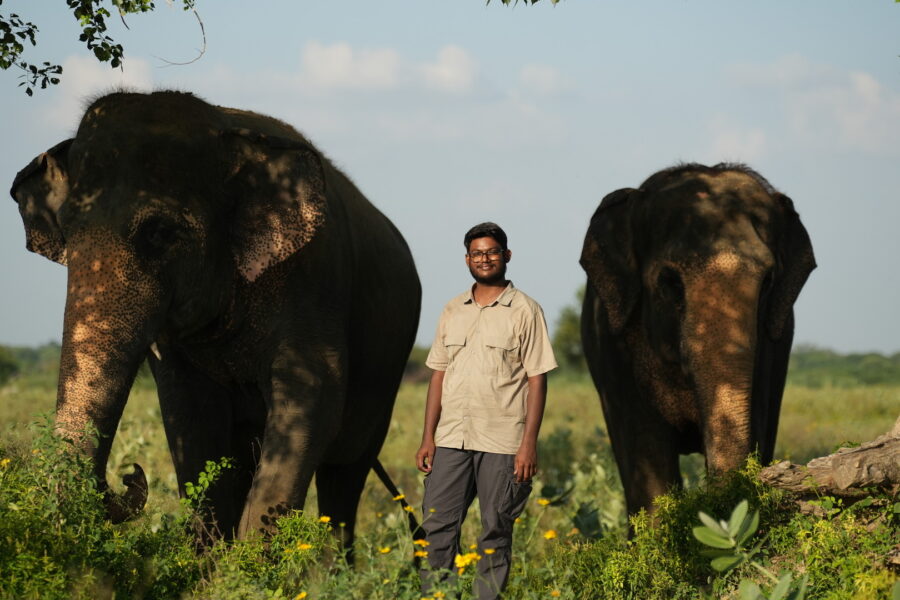Soaring high in the seamless sky with a breathtaking wingspan, vultures are known for their robust exterior and scavenging habit. A total of 23 species inhabit the world, but the wild populations of these aerial denizens are declining at an alarming rate.
Vulture Awareness Day is observed on the first Saturday in September every year, and gives us the perfect opportunity to highlight the important role that these scavengers play in nature.
Perceptions about Vultures
The name ‘vulture’ comes from the Latin word vultur, which could well be a derivation from vellere, meaning ‘to pluck or tear’. This indeed is a defining feature of how this raptor feeds — by tearing up the decaying flesh of animals.
By consuming carrion, they keep the environment clean and therefore hold high ecological significance across the globe. However, these birds are blanketed by negative perceptions since they are often considered to be symbols of death, bad luck, or evil. Since vultures feed on livestock carcasses, locals in South America tend to believe that they are responsible for killing their animals. This belief is unfounded and refutes the fact that vultures are scavengers. In order to prevent them from venturing into their farmlands, these birds are either hunted or poisoned.
Variety of Vultures
Vultures across the globe are classified into New World species (found in North and South America) and Old World species (found in Europe, Asia, Africa). A total of 23 extant species inhabit the planet, of which, nine can be found in India.
Here is the list of species in India, along with their IUCN status:
- Indian Vulture (Gyps indicus) – Critically Endangered
- White-rumped vulture (Gyps bengalensis) – Critically Endangered
- Slender-billed vulture (Gyps tenuirostris) – Critically Endangered
- Himalayan griffon (Gyps himalayensis) – Near Threatened
- Bearded vulture (Gypaetus barbatus) – Near Threatened
- Red-headed vulture (Sarcogyps calvus) – Critically Endangered
- Egyptian vulture (Neophron percnopterus) – Endangered
- Cinerous vulture (Aegypius monachus) – Near Threatened
- Griffon vulture (Gyps fulvus) – Least Concern
Convergent Evolution
The Old World and New World vultures experienced what is called a convergent evolution, which means that they evolved independently with traits similar to species found in matching surroundings. While the species found in Europe, Asia and Africa find their ancestral relations in birds of prey like buzzards, kites, and eagles, those found in the Americas are linked to storks.
Despite their independent evolution, all species share some common features such as:
- Large wingspan for easy soaring and flight
- Keen eyesight to seek carcasses from long distances
- Digestive acids in stomach
- Partially or completely bald heads for thermoregulation
- Nesting habits — mostly in tall trees or on cliffs to assist in flight
- Specialised beak that enables tearing flesh
- Weak and featherless toes
Social and Ecological Importance
A decaying carcass may cause several ailments such as brucellosis, tuberculosis, foot-and-mouth disease, and anthrax. By scavenging and consuming animal carcasses, vultures are known to be proud members of nature’s cleanup crew. They keep ecosystems in check and control any spread of diseases. With the decline of populations in India, it has been observed that carcasses that were consumed effectively by these birds now lie rotting for much longer. Carrions have now become a source of food for several rats and packs of feral dogs, who are both carriers of various diseases.
Simply put, an ecosystem can be considered healthy due to the presence of these scavengers. These birds effectively prevent the need for any human interference when it comes to disposing carcasses of livestock. Hence, their importance is not only limited to ecology, but also extends to human society.
Decline of Vulture Population in India
Until the 1980s, vultures were a common sight across the country. A notable study by a researcher of Bombay Natural History Society (BNHS) documented that since the early 1990s, three species have seen a drastic decline in their numbers — White-rumped vulture, Indian vulture, Slender-billed vulture. Between 1992 and 2007, the population of these species declined by almost 99.9%. It is estimated that all populations are plummeting at an annual rate of 50 percent across India, Pakistan, and Nepal.
The main reason for this nosedive was found to be diclofenac, an anti-inflammatory drug used to treat farm animals. When the scavengers fed on livestock carcasses, they were exposed to diclofenac which led to their kidney failure. Other factors that have contributed to the declining numbers include loss of habitat, retaliatory poisoning, agricultural practices, and illegal poaching for consumption. Superstitious beliefs have threatened them as well — locals residing in the Bundelkhand area of Northern India are known to use vulture eyes for tracing hidden treasures, and their eggs for black magic to bring the dead back to life.
Vulture Conservation
The frightful decline in vulture populations led to the ban of the drug diclofenac from being used by veterinarians in 2008. Alternative options were proposed to be used for treatment amongst cattle. Further, the Ministry of Environment, Forest and Climate Change under the Government of India launched an Action Plan for Vulture Conservation that aims to prevent extinction of the species. Researchers have been instructed to carry out periodic population analysis of the birds to monitor the trend across different states. In order to understand other causes of their mortality, several research projects were initiated.
Conservation breeding centres have also been established throughout the country. With an aim to house, raise, and ultimately release the scavengers in the wild, these centres provide in-situ conservation efforts. Subsequently, the released birds are also being studied through geotagging and radio telemetry. Vulture-safe zones were identified in eight different locations. Numerous awareness campaigns have been held amongst the public about the importance of the species.
Wildlife SOS is frequently involved in rescuing vulture species from distressing situations. While sometimes they are found lying on the ground in a semi-conscious state, they are even found injured due to manjha (glass-coated string used while flying kites). Our veterinary team also provides injured birds the necessary treatment and care. They are finally released back in the wild once they are deemed fit.
To support our efforts in rescuing and providing medical aid to afflicted animals, please click here.





